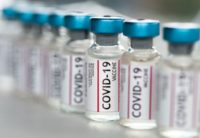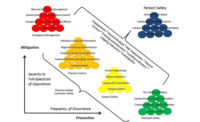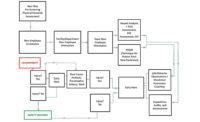As 2021 begins and 2020 is relegated to the history books, an objective, critical review of the previous year is needed. As humans experienced the first global pandemic since 1918, it also experienced a multitude of missed opportunities that would have mitigated the frequency and severity of COVID-19 exposures and infections. Contrary to many messages communicated by politicians, the pandemic is not a political issue. Instead, it is a hazard, subject to scientific hazard control. However, within the risk management construct, hazard control can only happen if risk control is first chosen as the risk treatment method (chosen over risk acceptance, risk avoidance, and risk transfer). Being that total risk avoidance and risk transfer are not really possible with a virus in every community on the globe, those that became activists against droplet containment (source control), social distancing, and capacity limits were, in essence, choosing risk acceptance. While many politicians and others became vocal against business hiatuses, this is understandable in that it impacts the economy, but to counter the exposure risks in keeping businesses open, distancing and source control are the balancing forces. Arguing against those while also arguing against congregation prevention (by temporarily closing the economy) becomes risk acceptance.
The hard truth of the pandemic is that, although this is the first of its kind since 1918, the concept of operations behind exposure prevention is not new. If compared to a hazardous material/chemical spill, the following would take place:
- A unified, consistent message regarding the hazard and the risk; this would be information on the chemical spilled, its Safety Data Sheet, and the risks posed to surrounding persons for a chemical spill while it would be information on the virus and its characteristics for COVID-19.
- A unified, consistent message and set of expectations on how to mitigate the spread of the hazard; this would be the procedures for stopping the source of the spill for a chemical spill while it would be consistent, unified expectations for face coverings/source control, capacity limits, hand hygiene, disinfection, and social distancing for COVID-19.
- Proper Personal Protective Equipment (PPE) and respirators for responders in the hazard area; this would be proper respirators and chemically resistant PPE for the chemical spilled while it would be N95 respirators (or equivalent), nitrile gloves, gowns, face shields, shoe covers, and hair covers for COVID-19.
- Procedures for determining the extent of the hazard’s spread and marking the area to ensure contamination control; this would be setting an entry control point, setting a cordon, determining the downwind hazard distance, and marking the hazard areas for a chemical spill while it would be population testing and, when necessary, contamination control zones for COVID-19.
- Procedures for safely neutralizing, absorbing, or physically removing the hazard for a chemical spill while it would be medical treatment, vaccinations, and surface disinfection for COVID-19.
Shortfalls
Knowing that the fundamental components of a chemical, biological, radiological, nuclear, and high explosive (CBRNE) response are the same but scaled and specified to the hazard, the shortfalls of the 2020 COVID-19 response in the U.S. are plain to be seen. While not all-inclusive, the following are evident in 2020’s response actions:
- There were multiple conflicting messages regarding the virus and its characteristics, including misinformation.
- There was not a consistent message as to stopping the spread; in fact, many actively encouraged the population to forego known preventative measures such as face coverings/source control and social distancing while some even created congregations to protest these preventative measures.
- Respirators and PPE have been in short supply since the pandemic began with the FDA issuing Emergency Use Authorizations for non-NIOSH approved foreign respirators in March 2020, enormous amounts of counterfeit respirators being seized by Customs, and price gouging becoming a reality in the PPE market. Other necessities such as hand sanitizer also had supply line deficiencies. However, the Defense Production Act or other mitigating factors were not implemented.
- Testing was not optimized; this led to deficiencies in data collection and analysis. Furthermore, testing was actively discouraged at the federal level with claims that it led to falsified case counts.
- There is not a consistent treatment for COVID-19 or a cure; additionally, a vaccine was not available until December of 2020 and then, on an FDA Emergency Use Authorization. Additionally, certain necessary medications and medical equipment were in short supply during 2020 and there were training gaps nationwide in properly setting up contamination control.
The path forward
Going into 2021, there are bright spots to be seen. Due to COVID-19, many who may not have been knowledgeable of respiratory protection standards and contamination control procedures may now have a better understanding, Ideally, this knowledge of disease exposure prevention protocols will lead to future prevention of Tuberculosis, Influenza, and other potential exposures. Many organizations have, in the face of N95 shortages, developed elastomeric respirator programs. Many Safety Committees have become more robust, leading to more engagement and better control of other, non-pandemic hazards. There are many ways that the hard times of the COVID-19 pandemic can lead to a more effective future in safety and incident prevention. However, these things have come at a tragic price of many lives lost, economic distress, and more. To honor those lost and to earn a brighter future, lessons must be learned from the COVID-19 pandemic. Hazards cannot be treated as political issues. Instead, they must be treated as causes of illnesses, injuries, property damage and other negative outcomes that have preventative measures. Any gaps in these preventative measures can be filled. Consistent, unified expectations can be set. Lives can be saved. These things are known but, sadly, for many, it took a pandemic.







